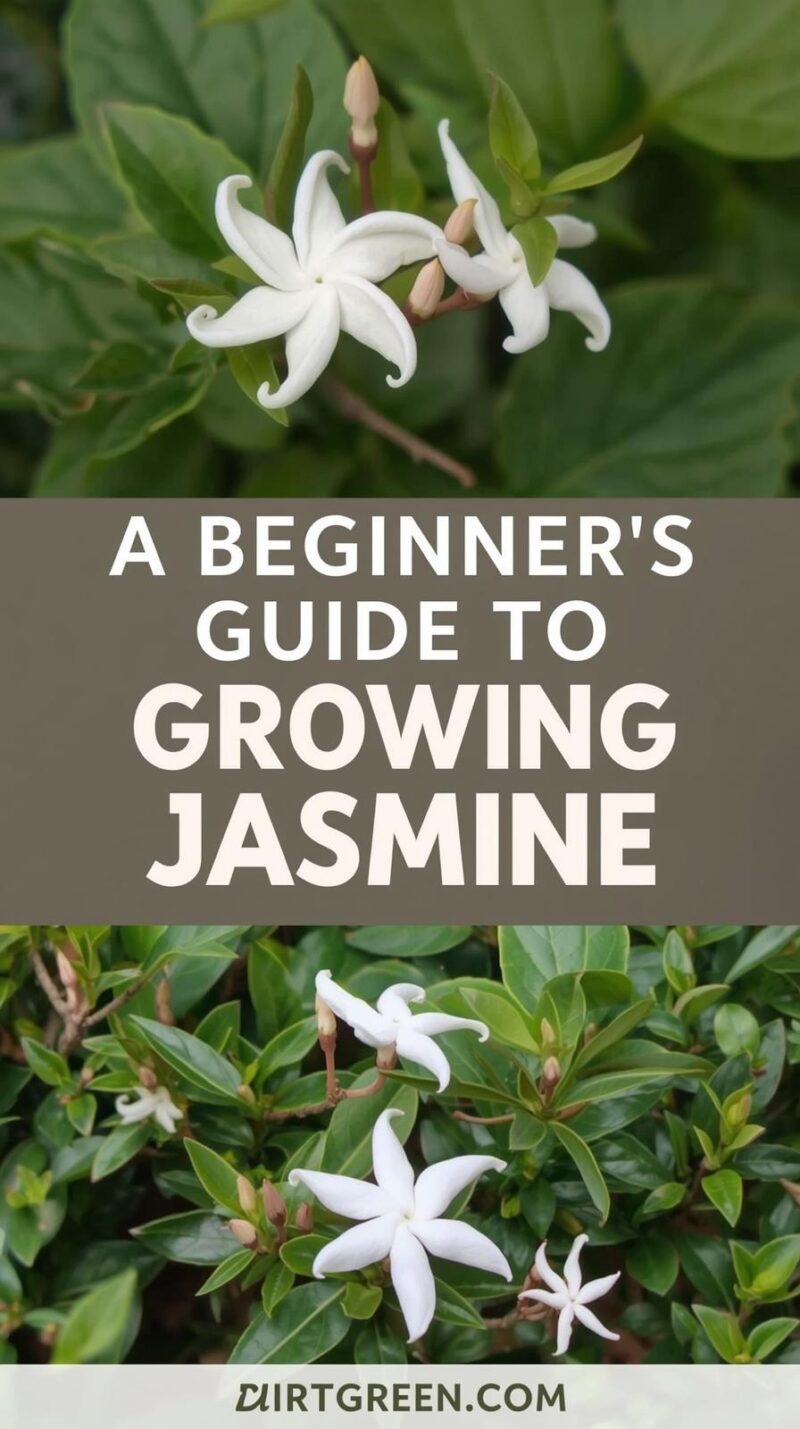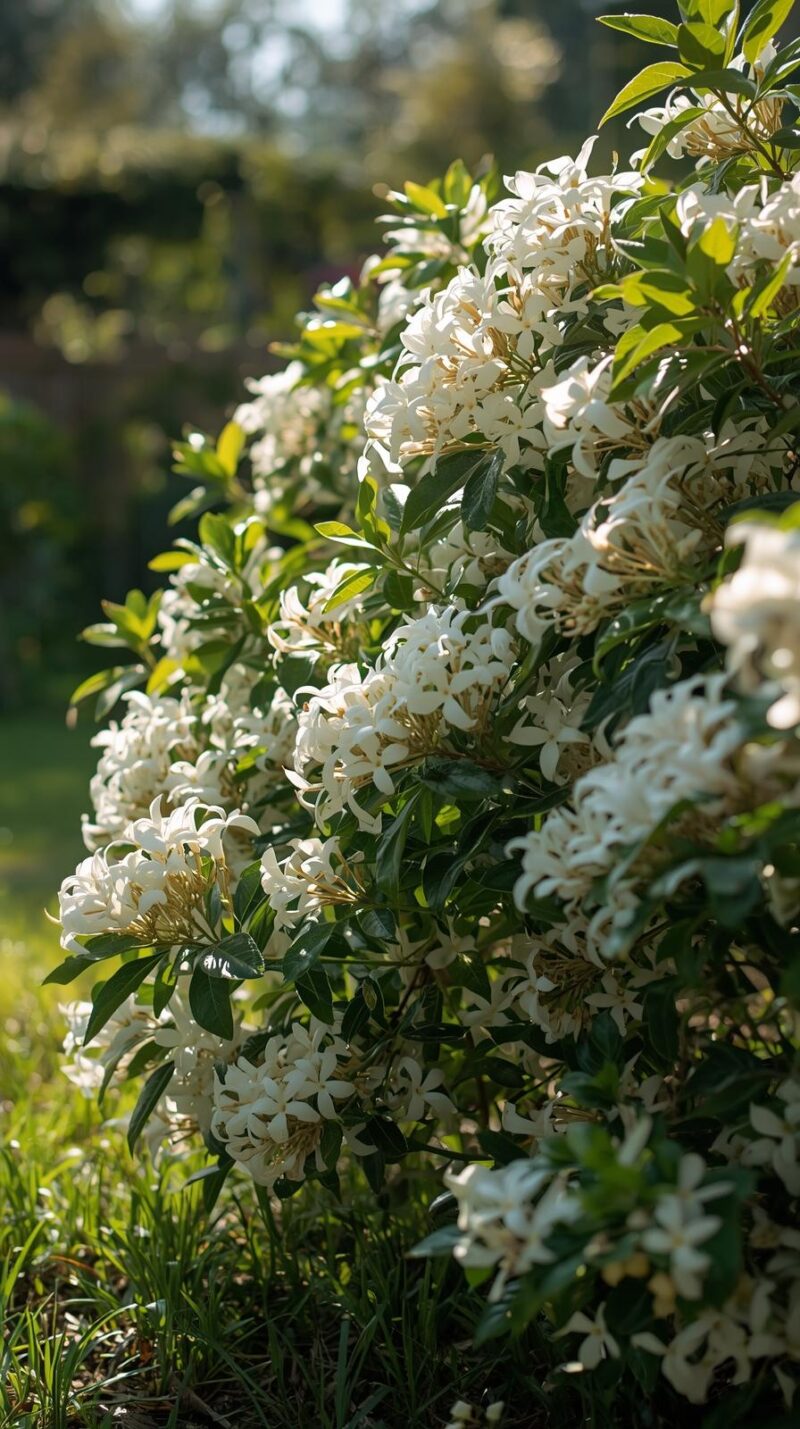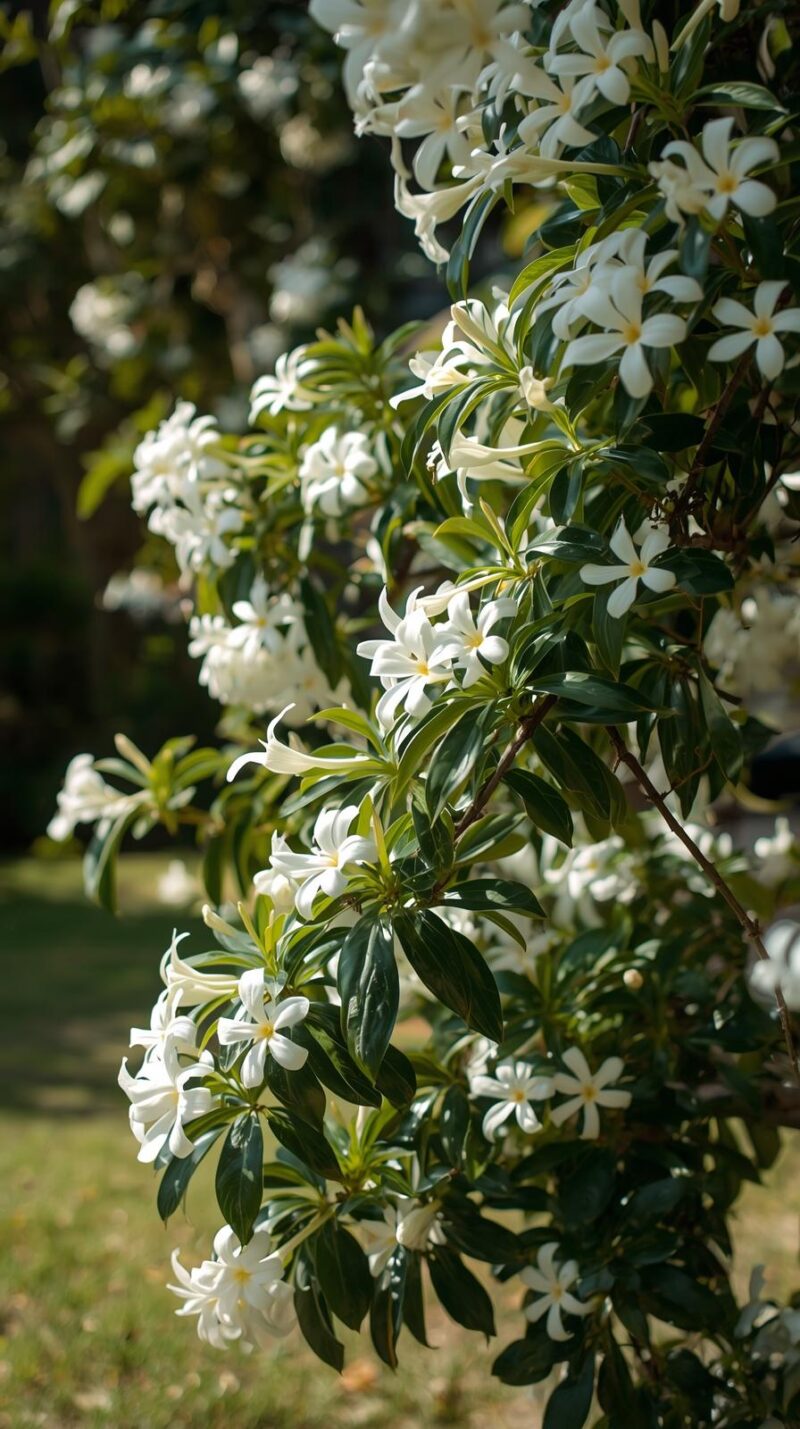Did you know the global jasmine market is set to hit $1.2 billion by 2027?
These fragrant flowers have been loved by gardeners and perfume fans for ages.
With the right tips, you can grow these beautiful plants in your garden.
This post will teach you everything about growing jasmine, from picking the right type to caring for it.
Start now and turn your garden into a scented paradise.
Key Takeaways
- Jasmine plants come in a variety of types, each with unique growth habits and features
- Selecting the right jasmine variety is crucial for successful cultivation
- Jasmine requires specific environmental conditions, including well-draining soil and ample sunlight
- Proper watering and fertilization techniques are essential for healthy, thriving jasmine plants
- Jasmine can be propagated through various methods, such as cuttings and division
Jasmine Varieties and Their Characteristics
The jasmine plant family is full of variety and beauty.
It offers many types and species for gardeners to discover.
Each has special features and growth habits, from the classic Jasminum officinale with its delicate white blooms and sweet scent to the bold Jasminum sambac.
Common Types of Jasmine Plants
- Jasminum officinale (Common Jasmine): A trailing evergreen vine with star-shaped white flowers and a heavenly scent.
- Jasminum sambac (Arabian Jasmine): A bushy, upright plant with large, white, highly fragrant flowers.
- Jasminum grandiflorum (Spanish Jasmine): Produces abundant, large, white blooms with a sweet, floral aroma.
- Jasminum polyanthum (Pink Jasmine): A vigorous climber with clusters of pink-tinted, fragrant flowers.
Different Growth Habits and Features
Jasmine plants come in many shapes and sizes.
Some, like Jasminum officinale, spread out as ground covers or cascade over walls.
Others, like Jasminum sambac, stay upright like shrubs.
The blooms also vary, with different sizes, shapes, and colors, giving gardeners lots of choices.
Selecting the Right Jasmine Variety for Your Garden

When picking a jasmine for your garden, think about your climate, space, and what you like.
Trailing types like Jasminum polyanthum are great for trellises or arbors.
Smaller species like Jasminum sambac are perfect for containers or small beds.
Knowing the unique traits of each type helps you choose the right one for your garden.
| Jasmine Variety | Growth Habit | Flower Characteristics | Fragrance Intensity |
|---|---|---|---|
| Jasminum officinale | Trailing vine | Small, white, star-shaped | Strong |
| Jasminum sambac | Upright, bushy | Large, white, highly fragrant | Intense |
| Jasminum grandiflorum | Trailing vine | Large, white, abundant blooms | Strong |
| Jasminum polyanthum | Climbing vine | Clusters of pink-tinted flowers | Moderate |
How to Grow Jasmine: Essential Requirements
To grow jasmine well, you need to know its specific needs.
Whether you want its scent or to beautify your garden, these tips will help.
Your jasmine plants will thrive with the right care.
Optimal Soil Conditions
Jasmine loves soil that drains well and is rich in nutrients.
The pH should be slightly acidic, between 6.0 and 7.0. Add compost or peat moss to your soil to help it drain better and feed your plants.
Stay away from heavy, clay soils.
They can cause root rot and other problems.
Sunlight Needs
Jasmine needs lots of sunlight to do well. It prefers areas with 6 to 8 hours of direct sun each day. Find a spot that gets sun and shade, as too much sun can burn the leaves.
Temperature Preferences
Jasmine likes warm, temperate weather.
It thrives in temperatures between 65°F and 85°F (18°C and 29°C).
It can handle a little frost but cold or freezing can harm or kill it.
Knowing the right soil, light, and temperature for jasmine lets you create the perfect spot.
Your jasmine plants will bloom beautifully and fill the air with their sweet scent.

Planting and Propagation Methods
Starting a jasmine garden is all about planting and growing.
You can use seeds or cuttings. Knowing the right way to do it is key to growing healthy plants.
Planting Jasmine from Seeds
Planting jasmine seeds is a journey that needs patience.
Begin by sowing seeds in soil that drains well and is rich in nutrients.
Make sure the soil is just a little bit over the seeds.
Keep the soil moist. It might take weeks for the seeds to grow.
When they do, move them to their final spot carefully to avoid harming their roots.
Propagating Jasmine from Cuttings
Using cuttings is a faster way to grow jasmine.
Pick healthy stems that aren’t flowering. Cut them just above a leaf node.
Dip the cut end in rooting hormone.
Then, plant it in a mix that drains well. Keep it moist and bright until it grows roots, usually in 4-6 weeks.

Optimal Planting Conditions
- Choose a sunny, well-drained location with minimal soil disturbance.
- Amend the soil with compost or other organic matter to improve drainage and nutrient content.
- Plant jasmine in the spring or fall for the best results, avoiding extreme temperatures.
- Provide support structures, such as trellises or arbors, to allow the jasmine to climb and spread.
Using these planting and growing tips, you’ll have a beautiful jasmine garden.
It will fill the air with its lovely scent and have lush green leaves.
Watering and Fertilization Guidelines
Proper watering is key for your jasmine plants’ health and growth.
Jasmine loves moist, well-draining soil but avoids too much water.
Water deeply, ensuring the soil is moist but not soggy.
Let the top inch or two of soil dry out before watering again to prevent root rot.
Proper Watering Techniques
Water jasmine plants so the soil stays moist but not too wet.
Water in the morning or evening to reduce evaporation.
Try not to get the leaves wet to avoid fungal diseases.
Adjust your watering based on the weather and your jasmine’s specific needs.
Fertilizer Types and Application Schedule
Jasmine plants need regular fertilization to stay healthy and bloom well. Use a balanced, water-soluble fertilizer for flowering plants. Follow the manufacturer’s instructions for application. Feed your jasmine every two to three weeks when it’s growing, and less often in winter.
Common Nutrient Deficiencies
If your jasmine shows signs of nutrient lack, like yellow leaves or poor blooms, act fast.
Deficiencies often include nitrogen, phosphorus, and potassium.
Use a balanced fertilizer or targeted nutrients to fix these issues and boost your plants’ health.
FAQ
What are the most common types of jasmine plants?
Popular jasmine types include Jasminum officinale (common jasmine), Jasminum sambac (Arabian jasmine), and Jasminum grandiflorum (Spanish jasmine). Each has its own growth, bloom, and growing needs.
What are the ideal soil and light requirements for growing jasmine?
Jasmine loves well-draining, slightly acidic soil with a pH of 6.0 to 7.0. It needs full sun, at least 6 hours a day, for best growth and blooms.
How often should I water my jasmine plant?
Keep jasmine moist but not too wet. Water when the top inch of soil feels dry. Make sure the soil is fully wet before stopping.
When is the best time to plant or propagate jasmine?
Spring or early fall is the best time to plant jasmine. For propagation, take cuttings in spring or summer. Root them in a mix that drains well.
How can I encourage my jasmine plant to bloom more?
Give your jasmine the right conditions: lots of sunlight, consistent water, and regular food. Prune old flowers and remove dead leaves to encourage new blooms.
What are some common pests and diseases that affect jasmine plants?
Jasmine can get aphids, spider mites, and scale. It’s also prone to powdery mildew and root rot in wet conditions. Check your plants often and fix problems quickly to keep them healthy.




